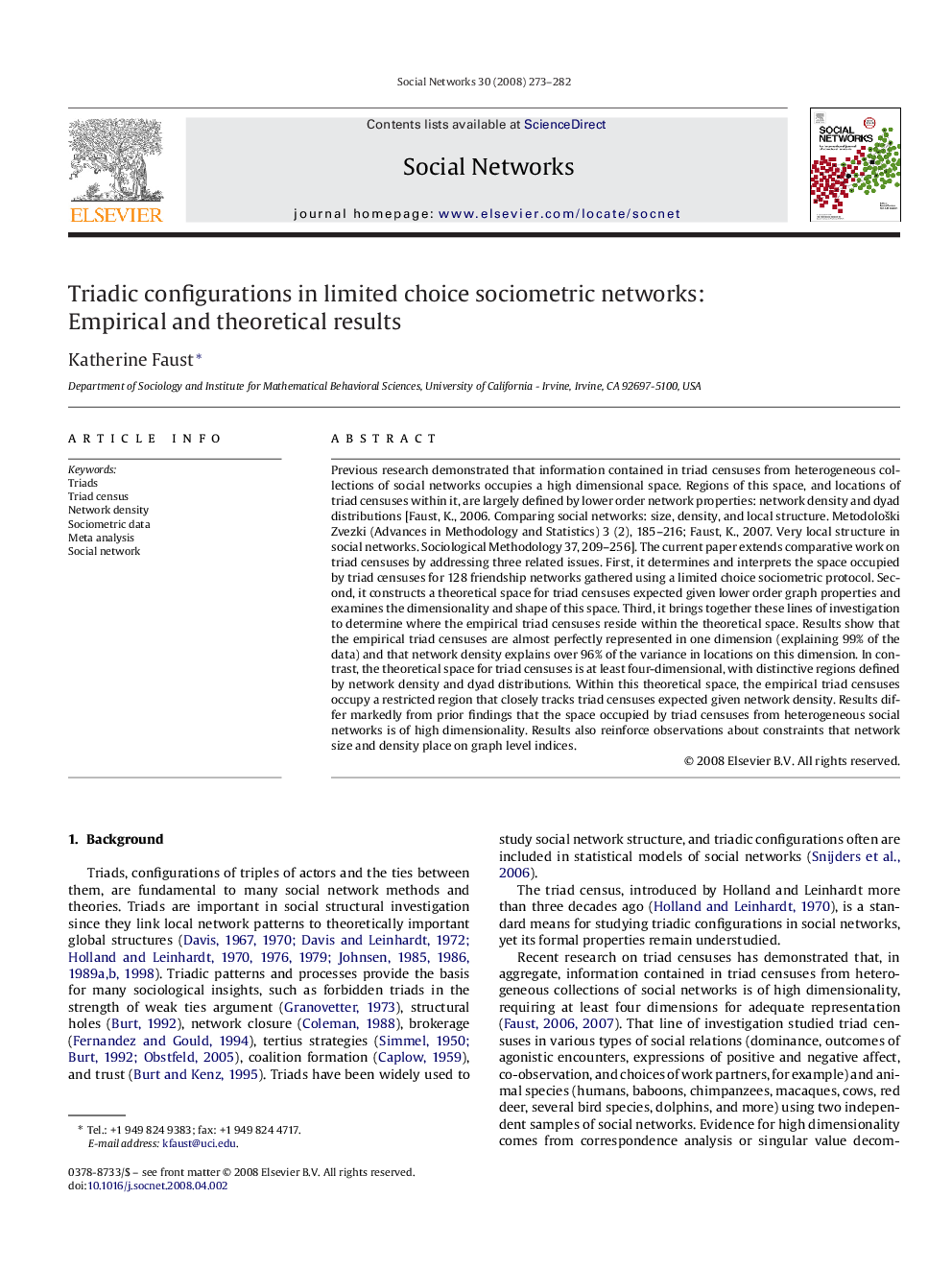| Article ID | Journal | Published Year | Pages | File Type |
|---|---|---|---|---|
| 1129547 | Social Networks | 2008 | 10 Pages |
Previous research demonstrated that information contained in triad censuses from heterogeneous collections of social networks occupies a high dimensional space. Regions of this space, and locations of triad censuses within it, are largely defined by lower order network properties: network density and dyad distributions [Faust, K., 2006. Comparing social networks: size, density, and local structure. Metodološki Zvezki (Advances in Methodology and Statistics) 3 (2), 185–216; Faust, K., 2007. Very local structure in social networks. Sociological Methodology 37, 209–256]. The current paper extends comparative work on triad censuses by addressing three related issues. First, it determines and interprets the space occupied by triad censuses for 128 friendship networks gathered using a limited choice sociometric protocol. Second, it constructs a theoretical space for triad censuses expected given lower order graph properties and examines the dimensionality and shape of this space. Third, it brings together these lines of investigation to determine where the empirical triad censuses reside within the theoretical space. Results show that the empirical triad censuses are almost perfectly represented in one dimension (explaining 99% of the data) and that network density explains over 96% of the variance in locations on this dimension. In contrast, the theoretical space for triad censuses is at least four-dimensional, with distinctive regions defined by network density and dyad distributions. Within this theoretical space, the empirical triad censuses occupy a restricted region that closely tracks triad censuses expected given network density. Results differ markedly from prior findings that the space occupied by triad censuses from heterogeneous social networks is of high dimensionality. Results also reinforce observations about constraints that network size and density place on graph level indices.
